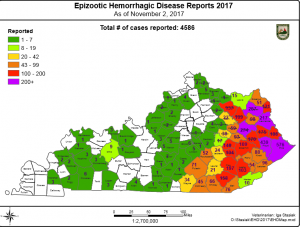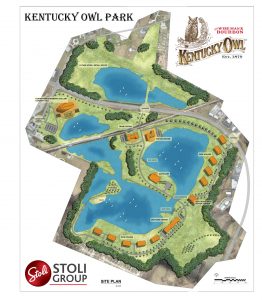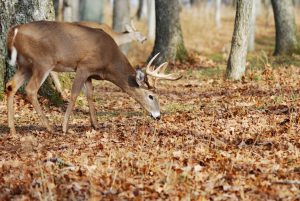 The Commonwealth of Kentucky Court of Appeals ruled in favor of the Bevin Administration by granting a stay of the Franklin Circuit Court’s Oct. 30, 2017 ruling in the Medical Review Panels case.
The Commonwealth of Kentucky Court of Appeals ruled in favor of the Bevin Administration by granting a stay of the Franklin Circuit Court’s Oct. 30, 2017 ruling in the Medical Review Panels case.
The Circuit Court’s opinion had ruled that the new Medical Review Panel law was unconstitutional.
As a result of today’s decision, 89 current cases will proceed, and all prospective malpractice cases will be required to proceed through the Medical Review Panel process before being filed in court.
“We are encouraged by the Court of Appeals ruling and ready to resume the administration of Medical Review Panel cases just as they were being handled before Oct. 30,” said Woody Maglinger, press secretary for Gov. Matt Bevin.
Senate Bill 4, enacted by the 2017 General Assembly and signed into law by Gov. Bevin, requires peer review of medical malpractice complaints by Medical Review Panels before medical malpractice cases can go to court. A complaint can bypass the panel and go directly to court only by agreement of all parties.
This new tort reform measure is aimed at cutting down on frivolous malpractice claims against medical professionals in the Commonwealth.
The Court of Appeals stay will remain in effect until further ruling.
A copy of today’s ruling can be accessed here.
 The recent cold snap experienced across Kentucky effectively ended the state’s worst outbreak of epizootic hemorrhagic disease in white-tailed deer in a decade.
The recent cold snap experienced across Kentucky effectively ended the state’s worst outbreak of epizootic hemorrhagic disease in white-tailed deer in a decade.
Epizootic hemorrhagic disease (EHD) is a viral disease transmitted to deer by biting flies or midges. It does not affect people or pets, and outbreaks cease at the first frost, which kills the bugs.
The Kentucky Department of Fish and Wildlife Resources receives and confirms EHD deer mortalities each year but the outbreak this year was severe by comparison. The department started receiving reports of sick or dead deer in some east Kentucky counties in July. August brought confirmation that a common strain of the EHD virus was to blame.
The department encouraged the public to report suspected cases, and the public responded. Kentucky Fish and Wildlife fielded 1,822 individual reports and documented 4,586 suspected EHD cases through phone calls and an online reporting system.
“Kentucky Fish and Wildlife would like to thank the public for its assistance,” said Dr. Iga Stasiak, state wildlife veterinarian with Kentucky Fish and Wildlife. “The incredible response we received was invaluable in helping us gauge the extent and intensity of this year’s severe outbreak. The public’s feedback through those outlets helped biologists monitor the situation in real-time and generate incredibly helpful maps.”
This year’s outbreak affected multiple states across the Appalachian Plateau. In Kentucky, it was primarily confined to counties along and south of Interstate 64 and east of Interstate 75. The epicenter of the outbreak in Kentucky appeared to be in Floyd and Pike counties.
The severity of this year’s outbreak in east Kentucky is comparable to that seen in other parts of the state in 2007. While EHD can cause significant regional population die-offs, populations recover with time, Stasiak said.
“The herd is resilient,” said Gabe Jenkins, deer program coordinator with Kentucky Fish and Wildlife. “We had probably the highest densities of deer that we’ve ever seen in that part of the state. Yes, it knocked them back pretty hard but the population will rebound.”
Herd estimates after the 2016-17 hunting season pegged the statewide deer population at about 850,000 animals.
Kentucky’s deer seasons are continuing as scheduled this year.
“Department biologists will be looking closely at harvest data and monitoring the deer herd ahead of next year’s hunting season,” Stasiak said. “We will also be monitoring deer at several check stations throughout the hunting season to identify deer that may have been exposed to the disease and assess the degree of immunity in the herd.”
Although EHD is not transmissible to people, the department reminds hunters to avoid eating animals that appear to be sick and asks that sick deer be reported to the department either by calling 1-800-858-1549 between 8 a.m.-4:30 p.m. (Eastern) weekdays or contacting their local private lands or public lands biologist, depending on where the animal was observed.
 In one of bourbon country’s largest single projects, Gov. Matt Bevin and leaders of Stoli Group broke ground recently for Kentucky Owl Park, a nearly $150 million lakeside complex to include a distillery, visitors center, cooperage, rickhouses, bottling center, restaurant and other facilities at Bardstown’s 420-acre Haydon Materials Quarry.
In one of bourbon country’s largest single projects, Gov. Matt Bevin and leaders of Stoli Group broke ground recently for Kentucky Owl Park, a nearly $150 million lakeside complex to include a distillery, visitors center, cooperage, rickhouses, bottling center, restaurant and other facilities at Bardstown’s 420-acre Haydon Materials Quarry.
“Global demand for bourbon continues to bring significant economic impact to Kentucky through jobs, investment and tourism,” said Gov. Bevin. “This new project by Stoli Group in the heart of bourbon country will serve to accelerate this trend. Stoli Group will offer numerous employment opportunities and support many families in and around Nelson County. I congratulate the company and look forward seeing this concept come to life over the coming years.”
Site prep and construction for the project’s first phase — which includes the distillery — could begin early next year with an opening targeted for 2020. It would create approximately 57 of the park’s anticipated 77 total full-time jobs. The park will be home to Stoli Group’s newly created American Whiskey Division, including its storied 140-year-old Kentucky Owl brand.
“Stoli Group will put great resources into these endeavors — both the distillery experience and the growth of this very important category for our company. As master blender, Dixon Dedman will continue to manage the production of Kentucky Owl — the crown jewel of the new division, which will remain a small batch offering,” said Dmitry Efimov, head of Stoli Group’s American Whiskey Division. “This site will be home to additional brands that we will create or acquire. With the continued strength and growth of American whiskies and bourbons, we are beginning to evaluate those opportunities.”
Stoli Group purchased the Haydon Materials Quarry, formerly Cedar Creek quarry, along John Rowan Boulevard in Bardstown, to provide a unique topographical setting. In the long-term, company leaders plan to establish the park as a premier destination on the Bourbon Trail. Their plans include a freshwater lake for fishing and recreation, a gourmet restaurant, a convention center and hotel, a vintage passenger train and a refurbished train station.
Established in 2013, Stoli Group is responsible for the management, distribution and marketing operations of SPI Group’s global spirits portfolio. One of the world’s leading wine and spirits organizations, SPI Group is an independent company headquartered in Luxembourg committed to a mission of building a respected portfolio of select premium brands. Additionally, SPI Group develops large-scale real estate projects, including the Finos Tequila distillery in Jalisco, Mexico and the award-winning Bayou Rum distillery and visitors center in Lacassine, Louisiana, and farms 14,000 acres of agricultural land, including for its Stoli and elit Vodkas in Tambov, Russia.
Sen. Jimmy Higdon, of Lebanon, said Stoli Group promises to grow the state’s strong reputation in the bourbon industry.
“I am so pleased to hear Stoli Group has chosen this Bardstown location to be Kentucky’s newest bourbon-based economic development project,” Sen. Higdon said. “Kentucky’s signature bourbon industry has showed no sign of slowing, and with this huge investment in the region and the creation of new Kentucky jobs, I have no doubt that Stoli Group will join the ranks of great distillers.”
Rep. Chad McCoy, of Bardstown, said the project will have a substantial impact on the already thriving local bourbon industry.
“Stoli Group understands the rich tradition of bourbon in the commonwealth, and we are thrilled the company is expanding a recently acquired family business to Bardstown,” said Rep. Chad McCoy, who serves as vice-chair of the Licensing, Occupations and Administrative Regulations Committee. “The distillery is a boon for our community and will cement Bardstown’s transformation into the premiere bourbon destination for Kentuckians and people from all over the world.”
Bardstown Mayor Dick Heaton said the company has found the perfect home in Nelson County.
“We are extremely happy to have Stoli Group’s American Whiskey Distillery join our growing family of distilleries in Bardstown and Nelson County,” Mayor Heaton said. “Bardstown is known as the Bourbon Capital of the World. This new investment is a testament that there is no better place to make bourbon, educate and entertain visitors than Bardstown, Kentucky. The announcement comes as a result of much hard work by many people in the public and private sector here. The City of Bardstown is proud to be a part of this exciting project.”
Nelson County Judge-Executive Dean Watts said the project will have a positive impact on the community.
“The announcement of Stoli Group’s American Whiskey Distillery coming to Nelson County is excellent economic news,” Judge-Executive Watts said. “We appreciate their investment in our community and look forward to helping with their success.”
To encourage the investment and job growth in the community, the Kentucky Economic Development Finance Authority (KEDFA) in September preliminarily approved the company for tax incentives up to $2 million through the Kentucky Business Investment program. The performance-based incentive allows a company to keep a portion of its investment over the agreement term through corporate income tax credits and wage assessments by meeting job and investment targets.
In October, KEDFA approved SPI Group for up to $1.2 million in tax incentives through the Kentucky Enterprise Initiative Act (KEIA). KEIA allows approved companies to recoup Kentucky sales and use tax on construction costs, building fixtures, equipment used in research and development and electronic processing.
In addition, SPI Group can receive resources from the Kentucky Skills Network. Through the Kentucky Skills Network, companies can receive no-cost recruitment and job placement services, reduced-cost customized training and job training incentives. In fiscal year 2017, the Kentucky Skills Network provided training for more than 120,000 Kentuckians and 5,700 companies from a variety of industry sectors.
 Kentucky artists who work in large two-dimensional formats are invited to submit entries for the exhibit program Reveal at the Kentucky Artisan Center at Berea.
Kentucky artists who work in large two-dimensional formats are invited to submit entries for the exhibit program Reveal at the Kentucky Artisan Center at Berea.
Reveal will showcase one selected artist in the Center’s lobby from January 13 – April 30, 2018. Reveal exhibits are a regular part of the center’s exhibition schedule through an annual statewide call-to-artists.
The center’s Reveal exhibit program provides an exhibition opportunity for 2-D artists whose large works cannot be accommodated within the center’s regular retail spaces. Works must be for sale, cannot exceed 8 feet in any dimension and must weigh less than 50 pounds.
Each year the Kentucky Artisan Center develops and presents special exhibits to showcase work by Kentucky artisans. These exhibits may focus on a specific medium, theme, technique, or subject and often include artists and works not regularly on display at the center.
Information about the exhibit and an entry form are available by contacting the Center. You can also request an entry form and prospectus by mail from the: Kentucky Artisan Center at Berea, Attn: “Reveal” 200 Artisan Way, Berea, KY 40403 or by calling 859-985-5448. The deadline for entry is Dec. 2, 2017.
The Center features works by more than 750 artisans from more than 100 counties across the Commonwealth. Special exhibits currently on display include, “Get Ready, Get Set: Multiples in Clay” through Feb. 24, 2018. For more information about events call 859-985-5448, go to the center’s website or visit us on Facebook.
The Kentucky Artisan Center at Berea is located at 200 Artisan Way, just off Interstate 75 at Berea Exit 77. The center’s exhibits, shopping and travel information areas are open daily from 9 a.m. to 6 p.m., and the cafe is open from 9:00 a.m. to 4:00 p.m. Admission is free.

Photo: Kevin Kelly/Kentucky Department Fish and Wildlife
A burst of fall colors, frosty mornings and an uptick in deer activity recently are encouraging and telling signs for hunters.
The season that contributes the greatest percentage of Kentucky’s annual deer harvest and fills many freezers with protein-rich venison is almost here.
Modern gun deer season opens statewide Nov. 11, 2017.
“Opening day should be spot on,” said Gabe Jenkins, deer program coordinator for the Kentucky Department of Fish and Wildlife Resources. “Our gun hunters should have some fantastic deer activity. The start of the season falls early this year. It touches on the end of the chase period and continues into the peak of the rut. We should see some good movement early and late in the season.”
Kentucky’s modern gun deer season is designed to coincide with the peak of fall breeding, known as the rut. It runs for 16 consecutive days in Zones 1 and 2 and for 10 consecutive days in Zones 3 and 4.
County zone assignments are published in the annual Kentucky Hunting and Trapping Guide, available on the department’s website at fw.ky.gov and where licenses and permits are sold. The guide also provides information about license and permit requirements, hunter education and hunter orange requirements, bag limits and legal equipment for deer hunting. Also available on the department’s website is a detailed list of frequently asked questions about deer hunting in Kentucky. Type “Deer Season FAQs” into the search box on the homepage to access it.
Hunters in Kentucky have taken more than 130,000 deer annually over the past five seasons. The 2016-17 tally was the third highest on record with the modern gun season harvest accounting for more than 70 percent of that figure.
This year, the modern gun season harvest will provide biologists additional data to further assess the scope and impact of the outbreak of epizootic hemorrhagic disease (EHD) in eastern Kentucky.
As of Nov. 2, Kentucky Fish and Wildlife had received reports of more than 4,500 sick or dead deer across the state since mid-July. The outbreak was confined primarily to counties east of Interstate 75 and along and south of Interstate 64.
EHD is a virus spread by small biting flies or midges. A recent cold snap effectively ended the outbreak since frost kills the insects that carry the disease.
The virus is not transmissible to people and the meat is safe to eat. In any year, hunters are advised to avoid eating the meat from animals that appear to be overtly sick.
Hunters concerned about hunting elsewhere in the state should have no reservations whatsoever, Jenkins said. The herd remains robust.
“We’ve got a lot of deer,” he said. “I look for it to be just as strong in the rest of the state as it has been in recent years. We had a good fawn year last year, good acorns last year, a mild winter and nice summer. All factors for good survival, good antler production. Lots of goods in there.”
The statewide deer harvest from September’s record opening weekend of archery season through October was up compared to 2016. Harvest reports from the youth-only gun and early muzzleloader seasons in October were down.
A middling mast crop could play to the hunter’s favor. This year’s statewide mast survey found about a third of white oaks with acorns. Red oak acorn production was better at 63 percent. White oak acorns are the first choice for deer because they are sweeter and more palatable to deer than red oak acorns, which have higher tannic acid.
“If you find a white oak with acorns, be on it,” Jenkins said. “During the early muzzleloader season, two does came right underneath me. There was a red oak tree and a white oak tree and one of the does was just sniffing around trying to find those white oak acorns and passing up those red oak acorns. She’d find one and crunch, crunch, crunch.”
In addition to the hunter orange and hunter education requirements, as well as following the guidelines for safe handling of firearms, hunter safety during the modern gun season also extends to the use of tree stands.
Serious accidents can be prevented by following the manufacturer’s instructions for installation, use and maintenance of tree stands.
Hunter education classes offered by Kentucky Fish and Wildlife cover the basics of tree stand safety. Olivia Dangler, a conservation educator with the department, said hunters must not let their guard down.
“Do not let your excitement cause you to forget about safety,” she said. “It does not matter how good of a climber you are, or if you think it will never happen to you, always wear a harness and stay clipped into the tree because it can save your life.
“Inspect your equipment prior to use and wear a full body harness whether you are hanging, practicing or hunting from a tree stand. Once you leave the ground, your harness should be connected to the tree. According to the International Hunter Education Association, 99 percent of fall victims injured were not attached to the tree.”
Tree stands and harnesses are rated to support up to their stated weight capacities.
Keep your hands free and never carry equipment while climbing up to or down from a tree stand. Use a haul line to raise or lower equipment instead.
“Firearms should be unloaded with the safety on,” Dangler said. “Attach the haul line to the sling or stock so the muzzle is pointed down when pulling it up to you or lowering it to the ground. If using a bow while hunting, make sure it is unloaded before attaching the haul line and have arrows secured in covered quiver.”
An online tree stand safety course can provide a good introduction or refresher. A free, interactive course is available through the Treestand Manufacturer’s Association website at tmastands.com.
Hunters should choose trees that are straight and large enough to adequately support their tree stands. Avoid ash trees. The emerald ash borer has decimated the ash tree population in recent years. Any ash trees still standing should be considered unsuitable. Knowing where ash trees are in proximity to your location is another important consideration. Dead limbs can break under their own weight without warning.
Hunters who are still looking for a place to hunt can find information about public lands on the department’s website. On any wildlife management area that allows gun deer hunting, anyone hunting from inside a ground blind must now attach a hat or vest made of solid, unbroken hunter orange material to the outside so it is visible from all sides. Hunter orange clothing requirements still apply for anyone inside the blind.
Once you know where you will be hunting, it’s always a good idea to let a family member or friend know where you will be that day and when you expect to return.
“Get out there and go,” Jenkins said. “The full-swing rut is definitely here.”
 Attorney General Andy Beshear, the Kentucky Association of Children’s Advocacy Centers and Prevent Child Abuse Kentucky announced upcoming child sexual abuse prevention trainings in Bowling Green for organizations that serve children.
Attorney General Andy Beshear, the Kentucky Association of Children’s Advocacy Centers and Prevent Child Abuse Kentucky announced upcoming child sexual abuse prevention trainings in Bowling Green for organizations that serve children.
The Dec. 5 trainings at the Fraternal Order of Police Lodge, 150 Corvette Drive, are aimed at daycares, summer camps, churches and other youth-serving organizations with program evaluation and implementation of an action plan that will strengthen protocols and policies to safeguard children from sexual abuse.
There will be two trainings Dec. 5 – one in the afternoon and one in the evening. Those interested in the trainings may pre-register.
“Across the country every year, approximately 35 million adults in youth-serving organizations come into contact with more than 70 million children and teens,” Beshear said. “Through this training in Bowling Green we are providing support to many organizations in the state that are working hard to create and maintain a safe place for children, employees and volunteers.”
Staff from the AG’s Office and Prevent Child Abuse Kentucky will provide the training.
Jill Seyfred, executive director of Prevent Child Abuse Kentucky, said the organization will continue to partner with Beshear to protect children.
“The training will help us move the needle one tick closer to achieving our ultimate goal of ensuring our children are safe; not only in their own homes, but at school, summer camps and everyplace they go,” said Seyfred.
As a training partner, the Kentucky Association of Children’s Advocacy Centers will host trainings at advocacy centers across the state.
“Youth serving organizations are poised to serve as a first line of defense in the battle against child sexual abuse, said Executive Director Caroline Ruschell. “By implementing the right strategies, these organizations can create an environment that fosters open dialogue and reduces opportunities for an act of abuse to occur.”
The Office of the Attorney General’s Child Victims’ Trust Fund (CVTF), administered by the Child Sexual Abuse and Exploitation Prevention Board (Board), is providing the funding for the trainings. The board also approves annual grants from the CVTF to support child abuse prevention programs.
Last year, the board sponsored statewide trainings for law enforcement, prosecutors, social workers, community advocates, religious affiliates, parents and educators on how to protect children from predators.
Beshear said the new trainings are a critical next step in protecting Kentucky’s children – one that allows his office to provide youth-serving organizations information from the risk reduction handbook that Prevent Child Abuse Kentucky developed with the assistance of a CVTF grant.
Beshear said supporting the CVTF is a direct investment in our children and encouraged others to consider making a donation, which can be made in three ways:
- Through a private donation directly to the CVTF.
- Purchase of an “I Care About Kids” license plate at your county clerk’s office.
- Donations made through the state income tax refund check-off program.
Beshear reminds Kentuckians that everyone has a moral and legal duty to report any instance of child abuse to local law enforcement or to Kentucky’s Child Abuse hotline at 877-597-2331 or 877-KYSAFE1.
For additional information regarding the upcoming youth-serving organization trainings, please visit, http://ag.ky.gov/family/childabuse/Pages/trainings.aspx or http://www.pcaky.org/news/freetraining.html.
 Gov. Matt Bevin recently congratulated Fritz Winter North America LP on opening phase one of its iron casting foundry and manufacturing facility in Franklin, a large-scale project producing brake rotors and bringing about 200 new jobs to Southwest Kentucky.
Gov. Matt Bevin recently congratulated Fritz Winter North America LP on opening phase one of its iron casting foundry and manufacturing facility in Franklin, a large-scale project producing brake rotors and bringing about 200 new jobs to Southwest Kentucky.
The company’s Stadtallendorf, Germany-based parent, Fritz Winter Eisengießerei GmbH & Co. KG, invested $110 million in the initial phase, which could grow to about $194 million with a planned expansion. Total employment could surpass 300.
“Fritz Winter is a global leader in the automotive supply industry, and we are thrilled to welcome the company’s operations to Kentucky,” said Gov. Bevin, who visited the German company’s headquarters during a Europe trip last year. “This company is making a long-term investment, as its nearly $200 million foundry demonstrates, and their presence in Franklin is already creating hundreds of jobs. Fritz Winter’s Simpson County facility will prove to be a game-changer for countless families in the region. Kentucky is grateful for their strong vote of confidence.”
Company executives announced the project in December 2015 and construction of the facility began in late 2016 in the Wilkey North Industrial Park. Employees at the facility began casting and machining disc brake rotors in June and celebrated its grand opening along with state and local officials in late October.
“After a construction time of not even one year, the first products rolled off the production line. This is a performance we can be really proud of,” said Jörg Rumikewitz, CEO of Fritz Winter.
The company cited Kentucky’s central location between American-owned automakers in the northern US and European-owned automotive assembly plants in the South. The location also will bring opportunities for new business with customers in the commonwealth and Midwest.
Ulf M. Kranz, the company’s CFO, said the new facility helps Fritz Winter produce brake parts locally for global vehicle platforms.
“After we have supplied the American market from Germany for more than 50 years now, our first iron foundry in the USA is an important milestone of our globalization strategy,” Kranz said. “This investment and our ability to meet the requirements of globally thinking customers in the automotive industry increase the competitiveness of Fritz Winter and therefore contribute to safeguarding the existing employment at Stadtallendorf.”
Founded in Stadtallendorf, Germany in 1951, Fritz Winter is a world-market leader in the production of cast iron engine blocks and heads, brake rotors and drums, flywheels and hydraulic housings. It serves the international car and truck industry and has developed a competitive advantage in lightweight and material-specific design. The family-owned company began exporting to the US in 1966 and currently employs 3,700 people worldwide.
Sen. David Givens, of Greensburg, said the local community stands ready to meet the company’s needs.
“I am pleased to congratulate Fritz Winter on its grand opening in Franklin,” Sen. Givens said. “I know our workforce in Simpson County and the surrounding region will serve the company well in filling its employee needs, and I look forward to Fritz Winter’s success in Kentucky and beyond.”
Rep. Wilson Stone, of Scottsville, thanked everyone involved with bringing Fritz Winter to the region.
“This is truly a great day for Franklin and our region’s auto industry,” Rep. Stone said. “I’m proud to welcome Fritz Winter as our community’s newest corporate citizen and want to thank our state and local leaders for coming together to help make all of this possible.”
Franklin Mayor Ronnie Clark noted that Fritz Winter’s impact will stretch beyond the community’s borders.
“We appreciate the partnership we had with the Kentucky Cabinet for Economic Development in landing the Fritz Winter project for Franklin, Kentucky,” Mayor Clark said. “Our local high school students, along with many residents of Franklin, now have a great opportunity for high-paying, skilled jobs with this excellent company. Fritz Winter will be one of the premier industries not only in Franklin, but in Kentucky as well. We are excited to have them as a part of our community.”
Simpson County Judge-Executive Jim Henderson said the company will have a substantial impact right away.
“Fritz Winter is one of the top economic development projects that Simpson County has ever landed,” Judge-Executive Henderson said. “This $193 million project will provide hundreds of new jobs for our local and area citizens. We are already seeing the positive economic impact that this project is having on our community. We are very grateful that Fritz Winter chose Franklin, Kentucky for its first North American manufacturing facility.”
To encourage the investment and job growth in the community, the Kentucky Economic Development Finance Authority (KEDFA) in December 2015 preliminarily approved the company for tax incentives up to $5 million through the Kentucky Business Investment program. The performance-based incentive allows a company to keep a portion of its investment over the agreement term through corporate income tax credits and wage assessments by meeting job and investment targets.
Additionally, KEDFA approved Fritz Winter for up to $690,000 in tax incentives through the Kentucky Enterprise Initiative Act (KEIA). KEIA allows approved companies to recoup Kentucky sales and use tax on construction costs, building fixtures, equipment used in research and development and electronic processing.
Fritz Winter also can receive resources from the Kentucky Skills Network. Through the Kentucky Skills Network, companies can receive no-cost recruitment and job placement services, reduced-cost customized training and job training incentives. In fiscal 2017, the Kentucky Skills Network provided training for more than 120,000 Kentuckians and 5,700 companies from a variety of industry sectors.
 Weather
Weather Traffic
Traffic @LouisvilleDispatch
@LouisvilleDispatch @LouisvilleDisp
@LouisvilleDisp Subscribe
Subscribe